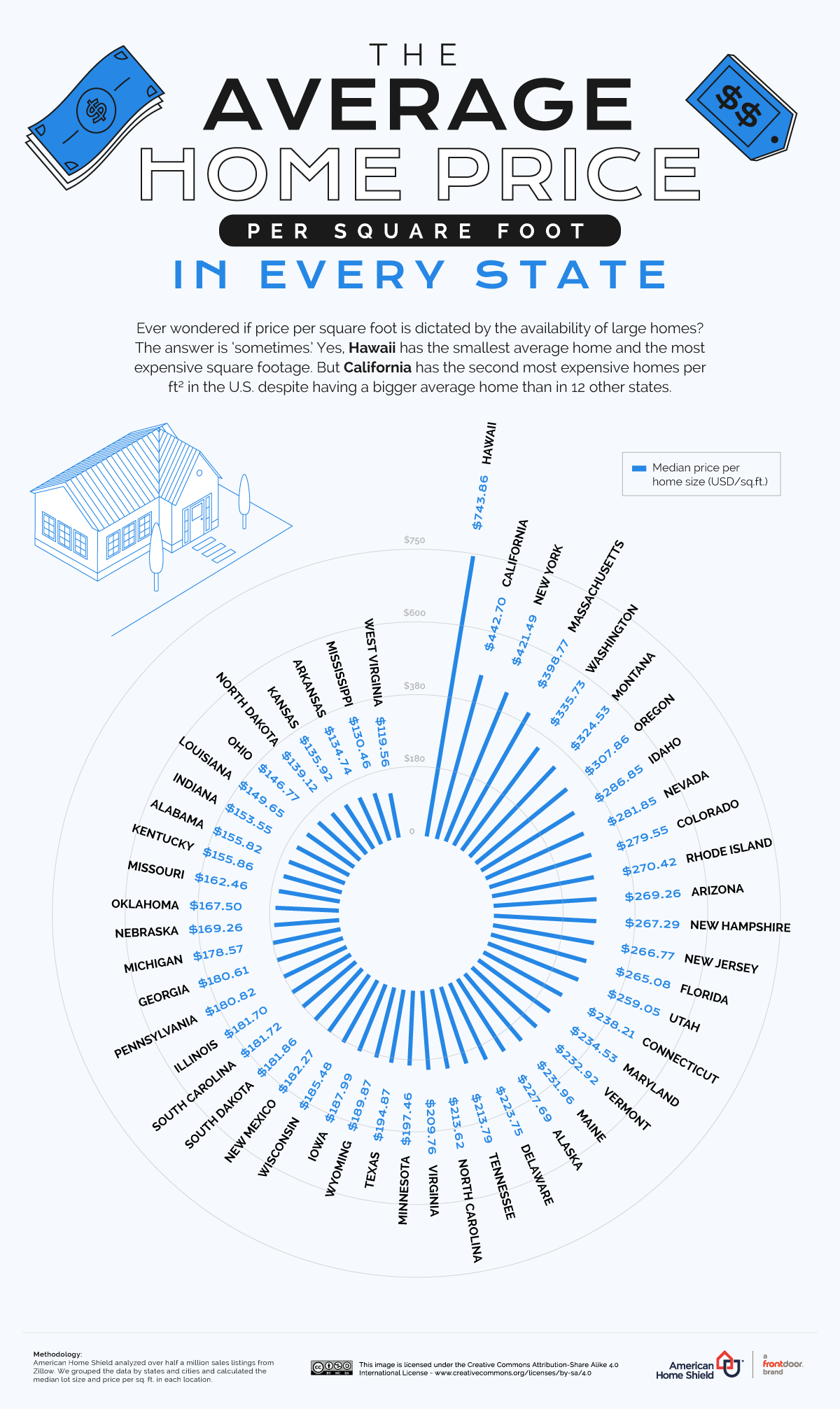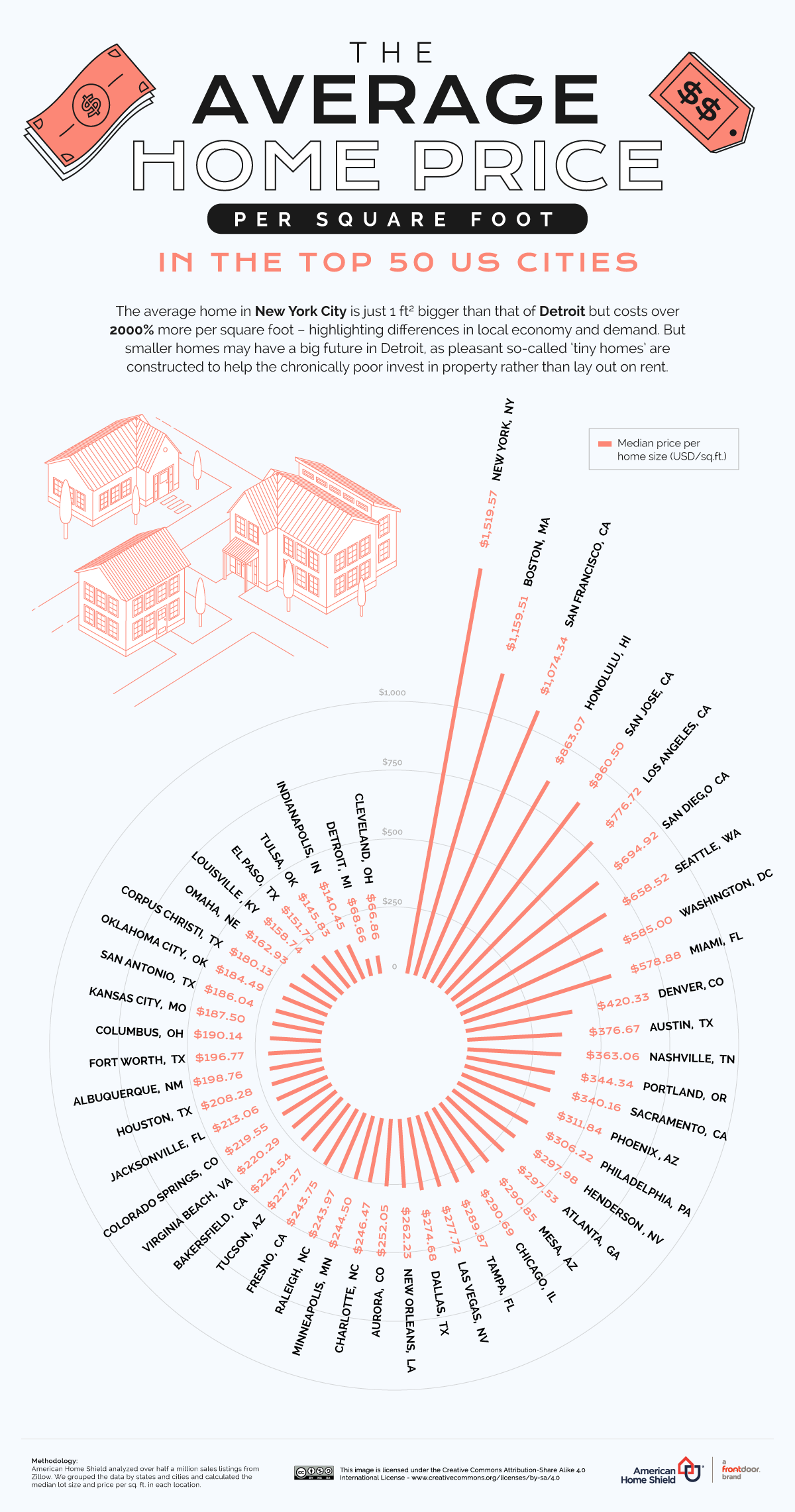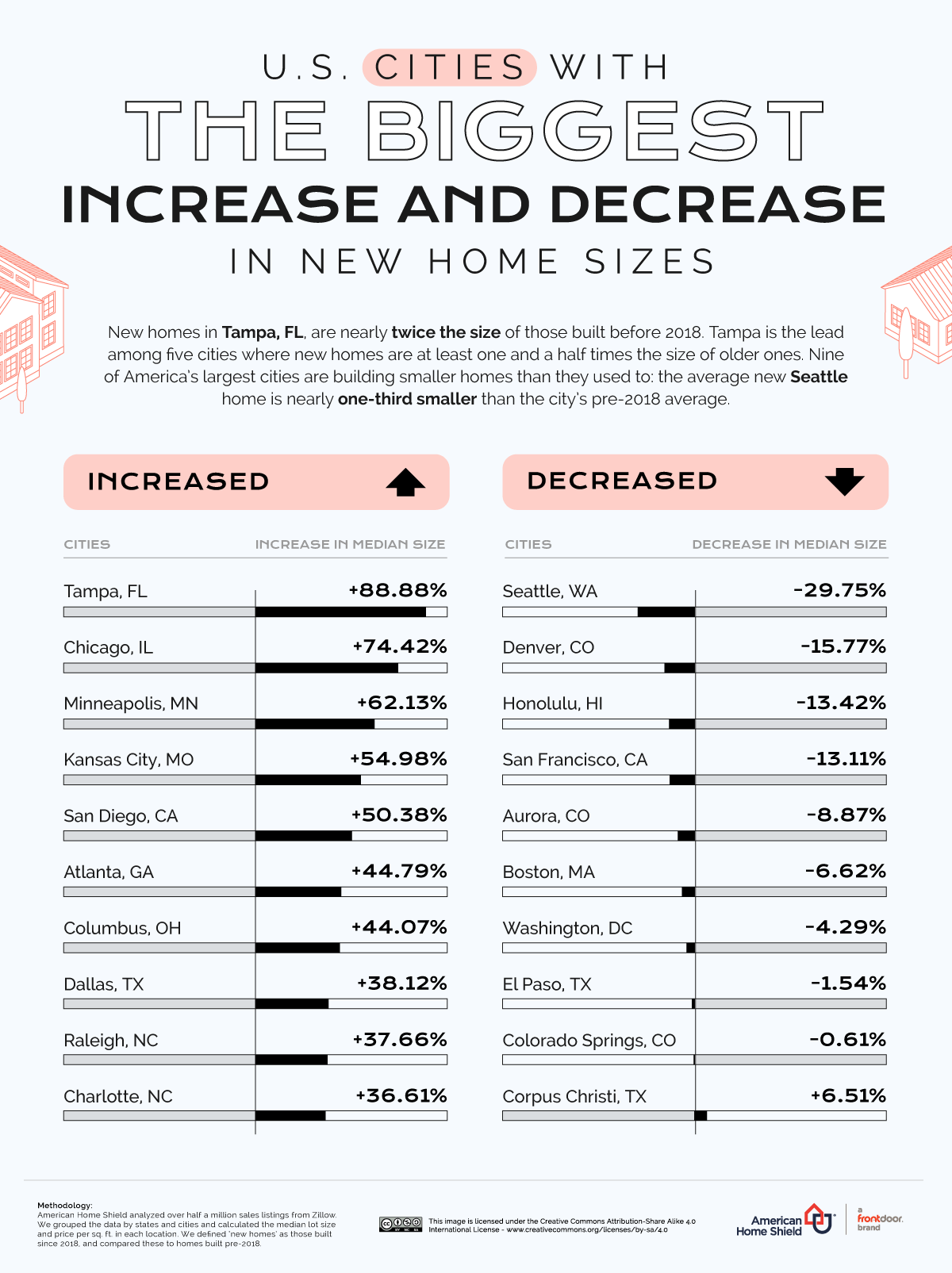Fast-Growing, Midsize Tech Hubs Have the Largest Homes
While major coastal cities like San Francisco, San Jose, Los Angeles, New York City, and Washington, D.C. were once the main drivers of job growth, in recent years employment growth has shifted to smaller, suburban cities with more affordable housing and lower costs of living. The development of tech hubs in fast-growing, well-educated areas like Colorado Springs, CO; Fort Worth, TX; and Raleigh, NC, has allowed wealth to flourish in midsize cities and created a demand for newer, larger homes.

A U.S. Bureau of Labor Statistics data search shows that while nationwide employment growth fell 0.3% from 2017 to 2021, in Aurora, CO, the number of jobs grew 5.7% – the sixth largest job growth of any city with at least 150,000 workers. The influx of new workers has created the demand for new housing, pushing up the size of the average Aurora home. Today, the average home in Aurora is 2,451 square feet, the second largest of any U.S. city. The typical home in Aurora is 38 years old – six years newer than the U.S. median.
About 70 miles south of Aurora down I-25 is Colorado Springs, also a fast-growing tech hub with growing demand for large new homes. From 2017 to 2021, employment in Colorado Springs grew 5.3%, the seventh largest increase of any city with at least 150,000 workers. New, high-income workers create demand for large, new homes, and in Colorado Springs, the average home is now 2,760 square feet – the largest of any U.S. city.
States With the Most Expensive Real Estate Have Smaller Homes
One factor that dictates home size is the cost of real estate. Many of the states with the smallest average home sizes in the West and Northeast also have the most expensive real estate per square foot, limiting the supply of large, suburban homes found throughout the Rocky Mountains or Mid-Atlantic states.
In Hawaii, the average home costs a whopping $743.86 per square foot – the most of any U.S. state and more than six times the cost of real estate in West Virginia. The average home in Hawaii is just 1,164 square feet, the smallest of any state. Similarly, in New York, the average home costs $421.49 – the third most of any state. The average home size in New York is 1,490 square feet – the second smallest of any state.

But high costs of small homes in the West and Northeast may also be pushing people to look for cheaper, large homes in other parts of the country. From 2020 to 2021, the population of Hawaii declined by 0.7%, the third largest decline of any state. The population of New York declined by 1.6% over the same period, the largest decrease of any state.
Dense, Coastal Cities Have the Most Expensive Homes
Dense, coastal cities with limited, older housing stock have the most expensive homes. In New York City, there are 28,182 people per square mile – by far the densest major city in the United States. The average home in New York City costs $1,519.57 per square foot, more than 20 times the cost of housing in Cleveland or Detroit and the most of any city.
Similarly, in San Francisco, there are 17,376 people per square mile – the second densest population of any major U.S. city. In a dense city with natural growth boundaries like San Francisco, high density coupled with demand can drive the price of housing sky high. The average home in San Francisco costs $1,074.34 per square foot, the third most expensive real estate of any city in the country.

In recent years, however, skyrocketing real estate prices have driven many Americans from major coastal cities to more affordable suburban ones. From 2020 to 2021, the population of New York City declined by 3.5%, the second largest decline of the top 50 largest cities. The population of San Francisco fell 6.3%, by far the largest decline.
Homeowners In Older States May Be Downsizing Their Homes
Home sizes are often dedicated by demographics and can change in tandem with the size and composition of an area’s population. In some parts of the country, one factor that may dictate changing home sizes is the age of a population. As homeowners age, they often downsize their homes, leaving large, family homes for smaller dwellings. According to data from Zillow, 46% of baby boomers who moved in 2021 were downsizing to a smaller home.

In Vermont, the percentage of the population that is 65 and older grew from 16.3% in 2015 to 19.4% in 2020 – the largest increase of any state. The housing market likely responded to the increased demand for smaller homes from older residents, as homes in Vermont are now 7.6% smaller than they were prior to 2018 – the third largest decline of any state. Similarly, in Maine, the 65-and-older cohort grew from 17.6% of the population in 2015 to 20.6% in 2020, the second largest increase of any state. Homes in Maine are now 4.6% smaller than they were prior to 2018, the fourth largest decline of any state.
Trends In Home Size Vary By City
The supply and demand for new housing can dictate home sizes. In some cities with high demand for housing, developers continue to build large, new homes, raising the average home size. The population of Tampa, FL, for example, grew 0.8% from 2020 to 2021 – the sixth largest increase of any of the 50 largest U.S. cities. In response to the increased demand and the large supply of vacant land, developers built bigger homes. The average home in Tampa is now 88.9% larger than it was prior to 2018, the largest increase of any city.
Other fast-growing cities, however, went the other direction – building smaller homes to accommodate the large influx in demand. The population of Aurora, CO, for example, grew 0.7% from 2020 to 2021, the ninth largest increase of any major U.S. city. The average home in Aurora is 8.9% smaller now than it was prior to 2018, the fifth largest decline of any large city in the United States.

In some cities, larger homes may be the result of growing family sizes. In Minneapolis, where home sizes have grown the third fastest since 2018, the average family size grew 1.3% from 2015 to 2020 – one of the largest increases in any city. In Charlotte, where homes have grown the 10th fastest since 2018, the average family size grew 2.2% from 2015 to 2020 – also one of the largest increases of any city.
Home Sizes Across the Country
Knowing the average size and price per square foot of homes throughout the United States can help potential homebuyers find the perfect place for them. Homebuyers looking for compact, older homes may do best to look in major coastal cities like New York City, Boston, or San Francisco, while those looking to get a little more home for their buck may want to join the thousands of Americans moving to fast-growing, midsize tech hubs in the Rocky Mountains and Mid-Atlantic.










